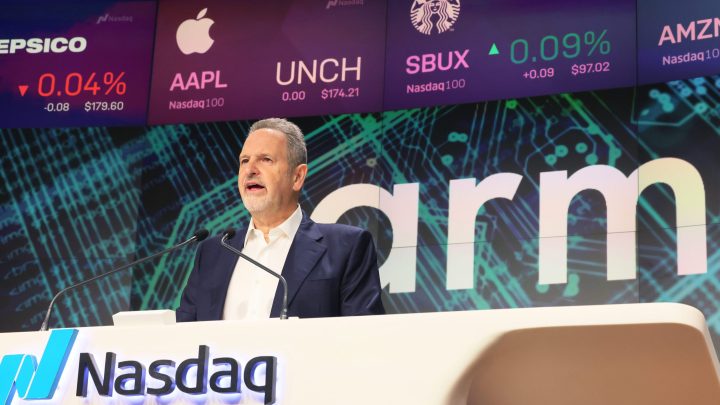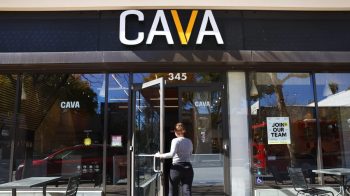
A lot goes into pricing a stock IPO
Share Now on:
A lot goes into pricing a stock IPO

Semiconductor designer Arm Holdings sold shares to the public Thursday. The IPO valued Arm at about $55 billion. Before the stock hit Nasdaq, big institutional investors had lined up to get a piece of the company and sent nearly $5 billion Arm’s way for shares that are now trading on the open market.
The initial price was $51 per share, which was, you could say, a decision. That offering price is a choice. We looked into how that choice is made.
To be born into the world as a public company, you need a midwife.
“One of the first things you do is go and you hire an investment bank, someone like Goldman Sachs or JPMorgan or Morgan Stanley,” said Dakin Campbell, author of “Going Public” and chief finance correspondent at Insider.
The investment bank midwife — words you never thought you’d see put together, you’re welcome — helps the company figure out how much it’s worth.
“What are the price-earnings ratios, price-to-sales ratios of comparable companies?” said Jay Ritter, professor of finance at the University of Florida. Those are standard gauges of what the market will bear.
“And then the company starts what’s known as a roadshow,” Ritter said. Think “Antiques Roadshow,” but via Zoom these days.
“The roadshow is really a chance for the company to tell its story to investors and begin to pin down investors on how much stock they might want to buy and what price they might want to pay,” Campbell said.
Then the price range narrows, and the investment bank underwriting the IPO starts to go from midwife to middleman.
The investors here aren’t just anybody. “Major IPOs are reserved for the best clients of the underwriter, the largest institutional clients and very-high-net-worth retail investors, so the public really doesn’t have any access to it,” said Scott Coyle. He’s CEO of ClickIPO, which works to get average investors access to IPOs.
A final share price is decided as late as the night before the stock goes public. Then shares are sold to those major investors, some of whom will sell some of those shares to the public the next day.
The ideal price is one that, as they say, “pops” on the first day of trading. “When the stock trades, they would like to see it trade up in value a little bit,” Coyle said.
That makes the company and the underwriters look good and rewards early and favored investors. Restaurant chain Cava’s stock popped 91%, which many experts considered too much. The average pop is 15% to 20%.
Facebook’s (now Meta) IPO famously did not pop at all, and then tanked. But eventually, that stock became a big winner.
There’s a lot happening in the world. Through it all, Marketplace is here for you.
You rely on Marketplace to break down the world’s events and tell you how it affects you in a fact-based, approachable way. We rely on your financial support to keep making that possible.
Your donation today powers the independent journalism that you rely on. For just $5/month, you can help sustain Marketplace so we can keep reporting on the things that matter to you.

















